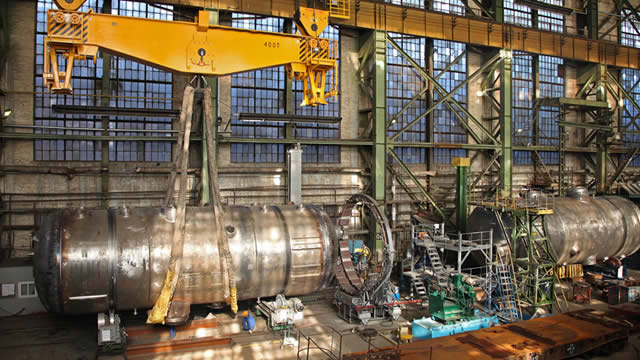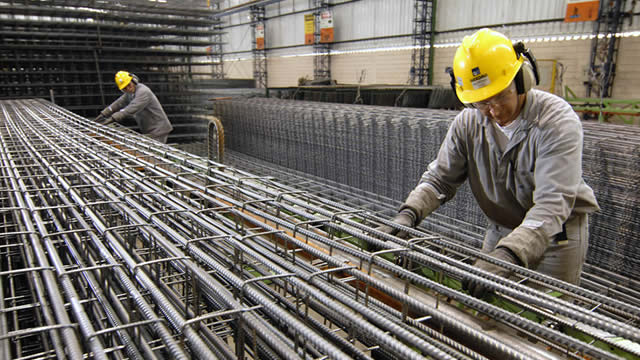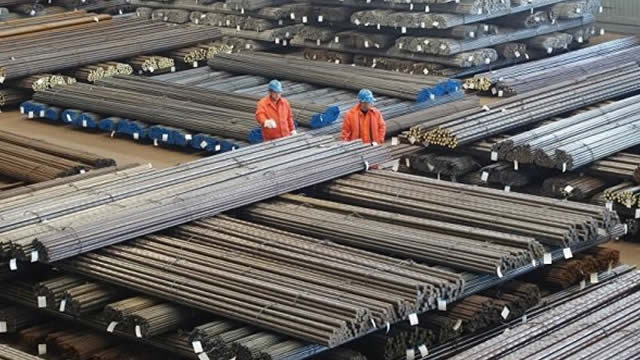
Glencore plc (GLCNF)

Glencore and Japanese steel groups seen circling Anglo's met-coal mines
Potential bidders are starting to line up for Anglo American PLC's (LSE:AAL) metallurgical coal arm as the group prepares to relaunch the sale of its five Queensland mines, according to a note from Panmure Liberum. The mines, including Grosvenor, Moranbah North, Aquila, Dawson and Jellinbah, produce around 15 million tonnes a year and were previously the subject of a $3.8 billion agreement with Peabody Energy, which the US group walked away from in August after citing a “material adverse change” linked to a March incident at Moranbah North.

Glencore plc (GLNCY) Analyst/Investor Day Transcript
Glencore plc (GLNCY) Analyst/Investor Day Transcript

Glencore Targets Annual Copper Production of 1.6 Million Tonnes by 2035
The company plans to restart the Alumbrera copper mine in the fourth-quarter of 2026, with production beginning in the first half of 2028.

Glencore expected to show strength at next week's investor event
Glencore PLC (LSE:GLEN) is seen as a 'Buy' among the analysts over at Citi, with a price target pitched at 440p. In a note, preceding Glencore's Capital Markets Day (CMD) next week, on 3 December, the American bank's London-based analyst said production guidance for 2025 may be adjusted slightly.

Glencore (GLNCY) Forms 'Hammer Chart Pattern': Time for Bottom Fishing?
After losing some value lately, a hammer chart pattern has been formed for Glencore (GLNCY), indicating that the stock has found support. This, combined with an upward trend in earnings estimate revisions, could lead to a trend reversal for the stock in the near term.

Is Glencore (GLNCY) Stock Undervalued Right Now?
Here at Zacks, our focus is on the proven Zacks Rank system, which emphasizes earnings estimates and estimate revisions to find great stocks. Nevertheless, we are always paying attention to the latest value, growth, and momentum trends to underscore strong picks.

Glencore powers into year-end on coal strength
Glencore PLC's (LSE:GLEN) third-quarter numbers showed a miner in control of its operations and on course for a solid finish to the year. Deutsche Bank's Liam Fitzpatrick, who kept his 'buy' rating and 400p price target, noted that production was strong across the board and guidance unchanged.

Is Glencore (GLNCY) a Great Value Stock Right Now?
Here at Zacks, our focus is on the proven Zacks Rank system, which emphasizes earnings estimates and estimate revisions to find great stocks. Nevertheless, we are always paying attention to the latest value, growth, and momentum trends to underscore strong picks.

Glencore surges as copper output bounces back
Glencore PLC (LSE:GLEN) shares surged almost 7% to their highest since the start of the year after the commodities giant backed its full-year production outlook after reporting a stronger third quarter, particularly in copper and coal output. Copper production increased 36% quarter on quarter, with significant gains at KCC and Mutanda in DR Congo, and Peru's Antamina and Antapaccay.

Should Value Investors Buy Glencore (GLNCY) Stock?
Here at Zacks, our focus is on the proven Zacks Rank system, which emphasizes earnings estimates and estimate revisions to find great stocks. Nevertheless, we are always paying attention to the latest value, growth, and momentum trends to underscore strong picks.

Glencore downgraded; Rio Tinto the one to watch, says US investment bank
JP Morgan has downgraded Glencore PLC (LSE:GLEN) to 'neutral' even as it keeps faith with the wider mining rally. The US bank says the sector still has room to run, but picking winners is becoming harder after a 22% surge since the start of August.

Anglo-Teck merger to unlock Chile mine synergies, if Glencore signs off
The proposed Anglo American-Teck merger has revived long-standing ambitions to share infrastructure at two major mines in northern Chile, but analysts say the plan could face hurdles to gain buy-in from Swiss miner and trader Glencore.







